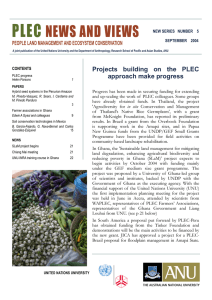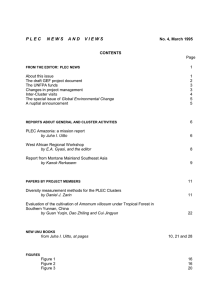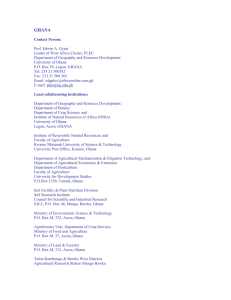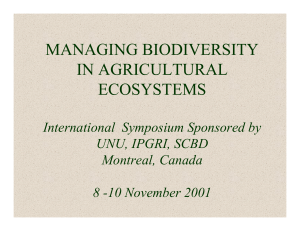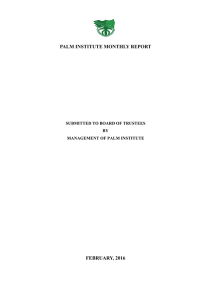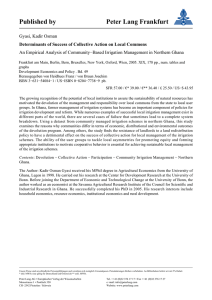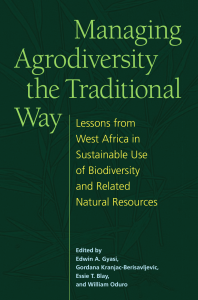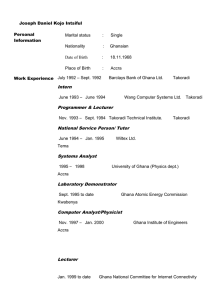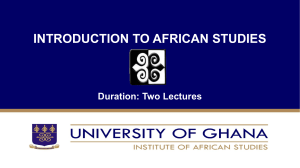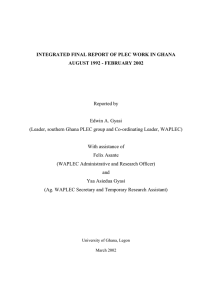MANAGING DIVERSITY IN THE AGRICULTURAL LANDSCAPE: CASE STUDY - GHANA
advertisement
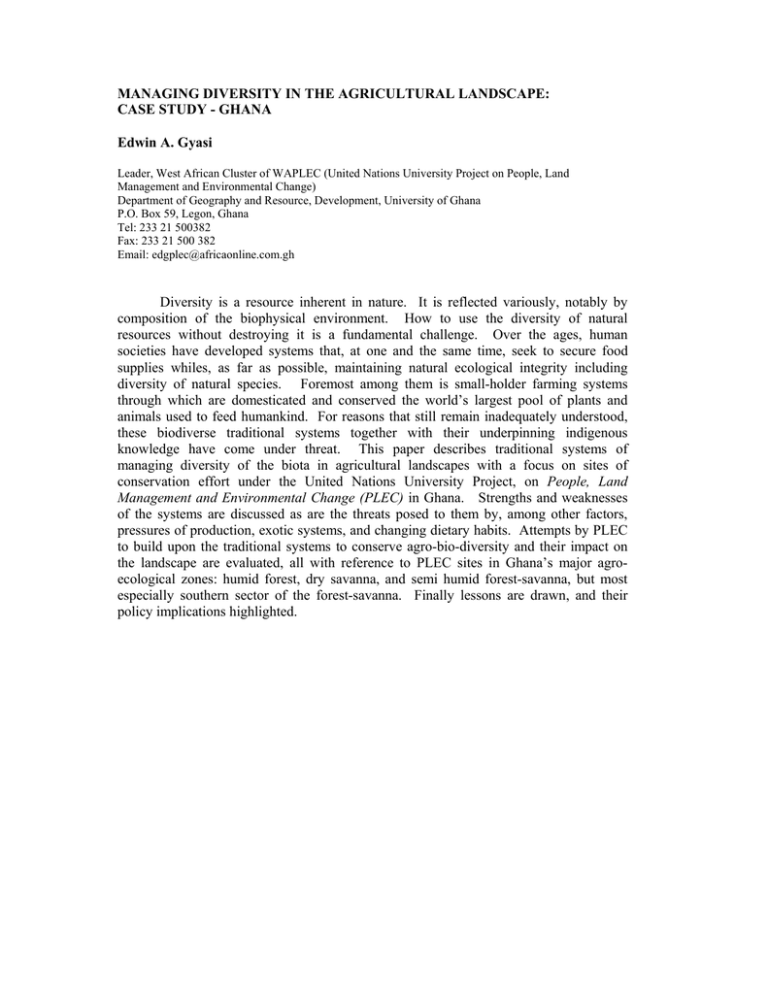
MANAGING DIVERSITY IN THE AGRICULTURAL LANDSCAPE: CASE STUDY - GHANA Edwin A. Gyasi Leader, West African Cluster of WAPLEC (United Nations University Project on People, Land Management and Environmental Change) Department of Geography and Resource, Development, University of Ghana P.O. Box 59, Legon, Ghana Tel: 233 21 500382 Fax: 233 21 500 382 Email: edgplec@africaonline.com.gh Diversity is a resource inherent in nature. It is reflected variously, notably by composition of the biophysical environment. How to use the diversity of natural resources without destroying it is a fundamental challenge. Over the ages, human societies have developed systems that, at one and the same time, seek to secure food supplies whiles, as far as possible, maintaining natural ecological integrity including diversity of natural species. Foremost among them is small-holder farming systems through which are domesticated and conserved the world’s largest pool of plants and animals used to feed humankind. For reasons that still remain inadequately understood, these biodiverse traditional systems together with their underpinning indigenous knowledge have come under threat. This paper describes traditional systems of managing diversity of the biota in agricultural landscapes with a focus on sites of conservation effort under the United Nations University Project, on People, Land Management and Environmental Change (PLEC) in Ghana. Strengths and weaknesses of the systems are discussed as are the threats posed to them by, among other factors, pressures of production, exotic systems, and changing dietary habits. Attempts by PLEC to build upon the traditional systems to conserve agro-bio-diversity and their impact on the landscape are evaluated, all with reference to PLEC sites in Ghana’s major agroecological zones: humid forest, dry savanna, and semi humid forest-savanna, but most especially southern sector of the forest-savanna. Finally lessons are drawn, and their policy implications highlighted.
